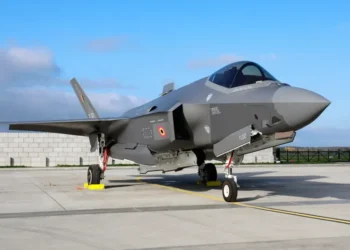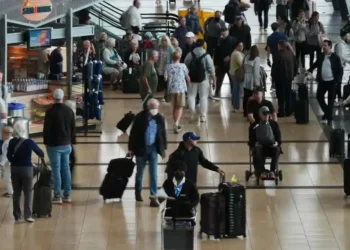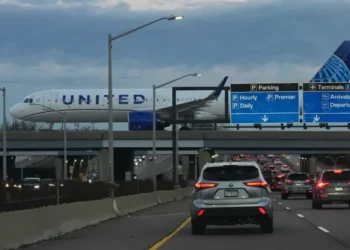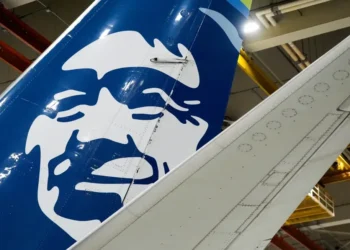UPS Plane Crash in Kentucky Linked to Engine Mount Cracks, NTSB Reports
Federal investigators released preliminary findings Thursday on the UPS cargo plane that crashed in Louisville, Kentucky, on November 4, killing 14 people. Dramatic images from the National Transportation Safety Board (NTSB) show the aircraft’s left engine detaching mid-takeoff, sparking flames before the plane briefly lifted off the runway. The MD-11 jet reached only 30 feet (9.1 meters) before crashing near Muhammad Ali International Airport, killing three crew members and 11 people on the ground.
The NTSB report marks the first official details about the incident, suggesting that fractures in the engine mount may have contributed to the disaster. The investigation remains ongoing.
Preliminary Findings Show Structural Concerns
A series of six photographs from the NTSB illustrates the engine separating from the left wing. Flames are visible as the burning engine flies above the aircraft, underscoring the severity of the structural failure. The plane was last inspected in October 2021 but had not yet reached the threshold for a more detailed examination of engine mount components, which still required nearly 7,000 additional takeoffs and landings.
Jeff Guzzetti, a former federal crash investigator, noted that while UPS conducted maintenance within the required timeline, the Federal Aviation Administration (FAA) may reassess whether the intervals are sufficient. “It appears UPS was conducting this maintenance within the required time frame, but I’m sure the FAA is now going to ponder whether that time frame is adequate,” Guzzetti told The Associated Press.
MD-11 Aircraft Grounded for Safety Checks
All MD-11 aircraft operated by UPS, FedEx, and Western Global, along with some related DC-10s, have been temporarily grounded pending inspections and repairs. The FAA has not yet specified the criteria for returning the planes to service.
Aviation expert John Cox described the cracks as fatigue-related, a common issue in metal parts subjected to vibration during flight. “It’s just a question of how often those parts need to be inspected and what maintenance is required,” Cox said. He added that such inspections could be costly, especially as airlines had already planned to retire these aircraft in the coming years.
MD-11 aircraft comprise roughly 9% of the UPS fleet and 4% of the FedEx fleet, according to company disclosures.
Flight Data and Early Warnings
The NTSB noted that cockpit voice recorders captured an alarm sounding approximately 37 seconds after the UPS crew initiated takeoff thrust. Todd Inman, NTSB board member, had briefed reporters on Nov. 7 about the flight data, emphasizing that the crash appears to be a human-error and maintenance-related tragedy rather than a natural disaster.
Sean Garber, whose salvage yard was struck by debris from the crash, described the event as a man-made calamity. “It’s one thing to be involved in a natural disaster and another thing to be involved in a human error tragedy, and that’s what we believe this is,” he said.
Historical Context and Aircraft Safety
The NTSB report referenced a similar event in 1979, when an American Airlines DC-10 crash in Chicago killed 273 people due to engine detachment. The DC-10 was the predecessor to the MD-11, sharing design features that experts describe as vulnerable to pylon attachment failures.
Former federal investigator Alan Diehl emphasized the need for more advanced inspection techniques beyond visual checks. “It is clear that engine pylon attachment failures are these aircraft’s Achilles’ heels,” Diehl said. Boeing’s annual safety statistics indicate that the MD-11 and DC-10 have higher accident rates compared with other commercial aircraft.
UPS Response and Ongoing Investigation
UPS Airlines President Bill Moore stated that the company is cooperating with investigators to determine the crash’s root cause. “Once we determine that, then they’ll be able to develop an inspection plan,” Moore said. He added that repairs and inspections will take time and could involve significant technical and financial resources before the fleet can return to service.
The NTSB continues to analyze flight data, maintenance records, and wreckage to identify any procedural or mechanical lapses that contributed to the crash.
Community Mourning Continues
More than two weeks after the crash, Louisville residents continue to mourn. The Louisville Orchestra held a free concert on Thursday evening, with Music Director Teddy Abrams noting that music offers comfort in times of tragedy. The community has grappled with the human toll of the disaster, highlighting the broader impact of aviation accidents on local populations.
This article was rewritten by JournosNews.com based on verified reporting from trusted sources. The content has been independently reviewed, fact-checked, and edited for accuracy, neutrality, tone, and global readability in accordance with Google News and AdSense standards.
All opinions, quotes, or statements from contributors, experts, or sourced organizations do not necessarily reflect the views of JournosNews.com. JournosNews.com maintains full editorial independence from any external funders, sponsors, or organizations.
Stay informed with JournosNews.com — your trusted source for verified global reporting and in-depth analysis. Follow us on Google News, BlueSky, and X for real-time updates.










